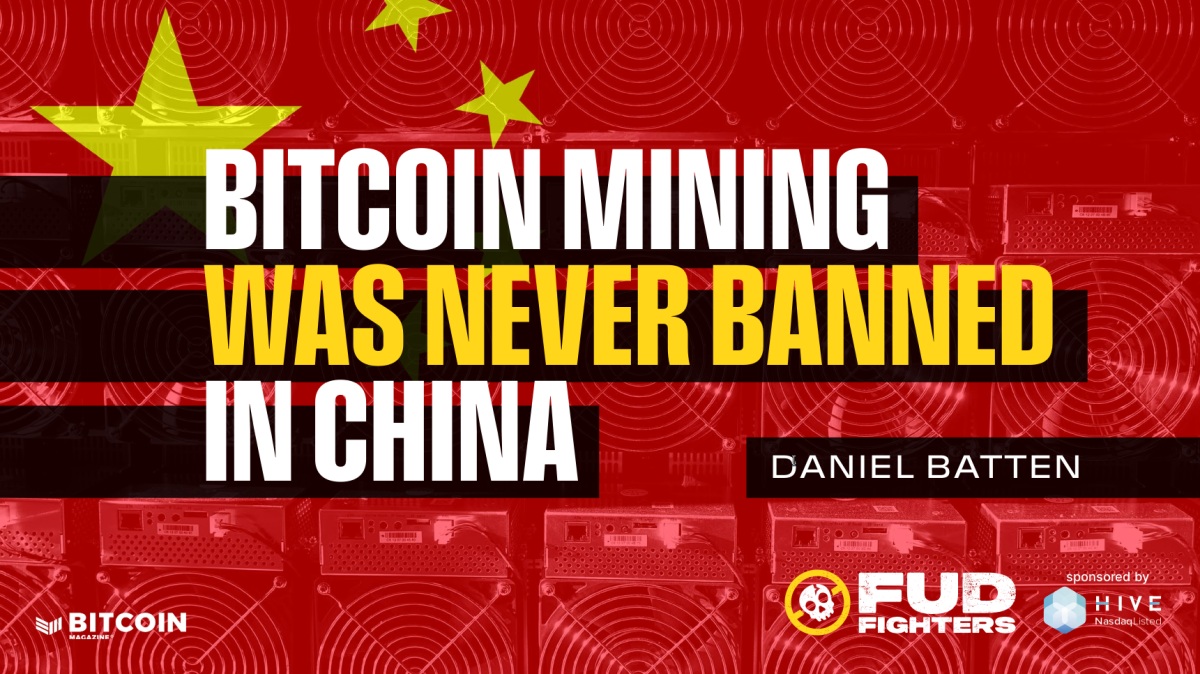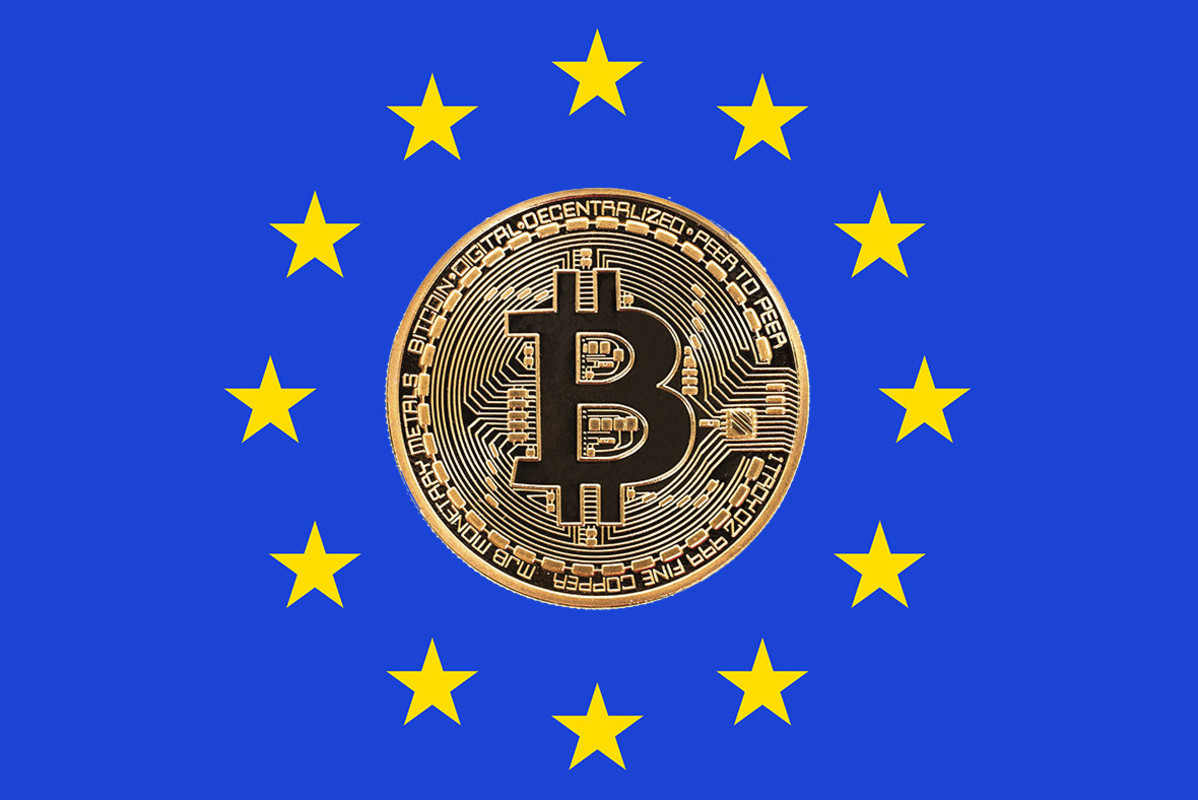Month: August 2024
Opportunities For Bitcoin Remittance in West Africa
Africa stands at the cusp of a financial revolution as Ecowas region financial ministers and central bank governors advanced plans to launch the single currency initiative, known as the ECO. The Economic Community of West African States (ECOWAS) promises to reshape the economic landscape of 15 nations with the introduction of ECO. Amidst the buzz of this unified currency, a digital contender—Bitcoin—emerges from the shadows, offering unprecedented solutions to the continent’s remittance woes. Could Bitcoin hold the key to a more inclusive, cost-effective, and resilient financial future for Africa? Not even a question over here, but an experience. As the ECO currency initiative progresses, Bitcoin emerges as a compelling alternative, offering unique solutions to longstanding financial challenges in Africa.
Image Source : Democracy Africa
Exploring some factual narratives, In a statement by Mr Wale Edun ( Nigeria’s Finance minister ) and his colleagues in the region, “The vision for the ECO extends beyond a mere currency. It aspires to become a cornerstone of economic integration, streamlining trade and bolstering monetary stability across the region.” One must be curious about the implementation plans towards actualizing this vision. Pathetically, one of the primary hurdles for the ECO currency is regulatory complexity. Harmonizing monetary policies and regulations across 15 diverse countries is a monumental task. Each member country has its own economic conditions, fiscal policies, and political landscapes, which could complicate the implementation and governance of a unified currency. Regulatory discrepancies may lead to uneven adoption and effectiveness of the ECO currency, potentially undermining its goal of regional economic integration.
Interestingly, the success of the ECO currency will depend heavily on the existing technological infrastructure in member countries. Many regions within ECOWAS still lack reliable internet connectivity and advanced financial technologies. These infrastructural gaps, if not addressed, stand to hinder the effective implementation and operation of the ECO currency, limiting its accessibility and usability for the general population. Bitcoin has already passed these stages in the region with its proven technological efficiency on its core operating layer, and its dynamics even in the face of redundant or no internet connectivity, through Bitcoin based solutions in the region in comparison to ECO, create an added advantage coupled with a glaring display of resilience and efficiency.
ECOWAS countries exhibit significant economic disparities, from resource-rich nations like Nigeria to smaller, less economically developed countries like Guinea-Bissau. A one-size-fits-all monetary policy may not address the unique economic challenges faced by each member country. Disparities like this could lead to imbalances and tensions within the union, potentially destabilizing the ECO currency and the regional economy. Bitcoin however has an advantage in terms of breaking regional bias while offering global acceptance and open trade options.
ECO intends to enhance financial inclusion by providing access to financial services for the unbanked population. But ECO being a proposed regional currency dependent on traditional finance systems interoperably in the ECOWAS controlled countries, implies ECO will subconsciously inherit indigenous problems such as having a substantial portion of the population unbanked due to limited access to traditional banking services. Won’t this leave this currency at the mercy of a democratized digital alternative ? That’s definitely a question: “utility and efficiency” will do justice to overtime as things keep unfolding. Bitcoin provides an alternative means of accessing financial services without the need for a bank account. By offering a decentralized and accessible financial system, Bitcoin empowers individuals and small businesses, fostering economic growth and seamless financial operations.
Looking further by comparing the “costs for remittance services among different regions, by breaking down the cost into two components: fee and foreign exchange (FX) margin. Within each region, as displayed below, it differentiates between digital and non-digital remittances. It shows fees account for a large portion of the costs for remittance services. Moreover, costs for non-digital services are consistently higher than those for digital services regardless of the region where the money is being sent to.”
Image Source : World Bank
As the only decentralized digital currency, Bitcoin offers a revolutionary solution to the high costs associated with traditional remittance services. Migrant workers sending money home to their families often incur significant fees as shown above, eroding the value of their hard-earned money. Bitcoin transactions, however, are drastically reducing these costs by eliminating intermediaries and offering direct peer-to-peer transfers. This cost efficiency is particularly beneficial in Africa, where remittance flows are a critical source of income for many families.
Facilitating seamless cross-border transactions with Bitcoin is a crucial advantage in the ECOWAS region, where intra-regional trade is encouraged. Unlike the ECO currency, which will still require some level of governmental oversight and regulation, Bitcoin operates independently of national borders. This independence allows for fluid and efficient transactions between businesses and individuals across different countries, promoting regional trade and economic integration. The continuous adoption of Bitcoin will drive growth economically by attracting investments into the fintech and remittance sector while creating new job opportunities and payment rails. The innovative edge of Bitcoin and blockchain technology will spur continuous technological advancements and economic diversification. By embracing these technologies, African countries will progressively position themselves at the forefront of the global digital economy, fostering a culture of innovation and entrepreneurship.
Blockchain technology and the cryptographic algorithms which underpins Bitcoin offers a level of transparency and security that can enhance trust in financial transactions. The immutable nature of blockchain records ensures that transactions are secure and verifiable, reducing the risk of fraud and corruption. This transparency is critical for remittance services, ensuring that funds are transferred securely and efficiently. Additionally, responding to the remittance question on the Mara livedesk in Nashville, Femi Lounge of the Human Rights Foundation stated: “the decentralized nature of Bitcoin provides a financial system less susceptible to centralized failures or manipulations. In Africa, we have 46 currencies, one of the big problems is settlement.The last hope of importers and exporters in Nigeria and Sub-Saharan Africa in general is Bitcoin and USDt.”
Image Source : BitcoinMagazine
The implementation of the ECO currency in West Africa is unnecessary if Bitcoin is fully adopted. Bitcoin’s peer-to-peer networks and exchange rails offer superior efficiency and utility compared to the proposed ECO currency. By leveraging Bitcoin’s strengths, West African countries can bypass the need for a new regional currency and create a robust, inclusive financial system. This adoption would address regulatory challenges, enhance technological infrastructure, and improve financial literacy, ensuring a smooth transition to a modernized financial ecosystem. The potential to reduce remittance costs, enhance financial inclusion, and facilitate cross-border transactions makes it a powerful tool for economic development in Africa. The future of Africa’s financial system lies in embracing innovative solutions that address its unique challenges. By leveraging the strengths of Bitcoin, Africa will create a reliable, inclusive, and forward-thinking financial ecosystem that supports sustainable economic growth and development.
This is a guest post by Heritage Falodun. Opinions expressed are entirely their own and do not necessarily reflect those of BTC Inc or Bitcoin Magazine.
Metaplanet To Raise $70 Million To Buy More Bitcoin
Metaplanet, a publicly listed Japanese company, has announced plans to raise up to ¥10.08 billion ($70 million) through a gratis allotment of stock acquisition rights to existing shareholders. The majority of funds raised will be used to purchase additional Bitcoin.
JUST IN: 🇯🇵 Metaplanet announces to raise ¥10.08 billion to buy more #Bitcoin pic.twitter.com/HXBf7RNeMx
— Bitcoin Magazine (@BitcoinMagazine) August 6, 2024
The company will issue one stock acquisition right per common share to shareholders of record on September 5. These rights will allow shareholders to acquire Metaplanet common stock at an exercise price of 555 yen (~$4) during the exercise period from September 6 to October 15.
Metaplanet currently holds around 246 bitcoins worth ~$13.4 million. By raising $70 million, the company aims to significantly expand its Bitcoin treasury as part of its long-term growth strategy.
This move mirrors the approach pioneered by MicroStrategy, the Nasdaq-listed business intelligence firm. Since 2020, MicroStrategy has raised debt and sold shares to accumulate over 220,000 Bitcoin, now worth billions.
By positioning itself as Japan’s leading publicly traded bitcoin holding company, Metaplanet hopes to follow MicroStrategy’s playbook and create similar shareholder value. It aims to pioneer Japanese listed firms in adopting Bitcoin as a reserve asset.
Bitcoin offers twin benefits as an asset with long-term appreciation potential that also hedges against fiat currency depreciation. Building a Bitcoin treasury strengthens the company’s balance sheet and supports future growth initiatives.
Disclaimer: Bitcoin Magazine is wholly owned by BTC Inc., which also operates UTXO Management, a regulated capital allocator focused on the digital assets industry and invested in Metaplanet. UTXO invests in a variety of Bitcoin businesses, and maintains significant holdings in digital assets.
CANADA FX DEBT – Canadian dollar weakens, benchmark yield climbs
Post Content
Semler Scientific Buys Another $6 Million Worth of Bitcoin
Semler Scientific, a public medical technology company, announced it had purchased an additional $6 million worth of Bitcoin. This latest purchase brings its total Bitcoin holdings to 929 BTC, worth $63 million.
JUST IN: 🇺🇸 Public Company Semler Scientific purchases additional 101 #Bitcoin for $6 million. pic.twitter.com/VLFwuPwXQV
— Bitcoin Magazine (@BitcoinMagazine) August 5, 2024
Semler adopted a Bitcoin treasury strategy in May 2024, following other public companies like MicroStrategy. Since then, it has aggressively acquired Bitcoin, citing it as a “compelling investment.”
“We continue to firmly believe that Bitcoin is a compelling investment and plan to acquire additional Bitcoins with our cash from operations,” said Semler chairman Eric Semler.
He added, “We plan on acquiring additional bitcoins with our cash from operations, as well as with cash generated from the sale of securities under our $150.0 million shelf registration statement, once effective.”
On May 28, Semler bought 581 BTC for $40 million. It followed up with 247 BTC for $17 million on June 6 and another 49 BTC for $3 million on June 28. As of August 5, its 929 BTC are worth over $63 million.
Semler is closely mimicking MicroStrategy’s Bitcoin strategy. Since 2020, MicroStrategy has purchased over 220,000 BTC worth billions, making it the largest corporate holder. Its Bitcoin bet has increased MicroStrategy’s enterprise value dramatically.
Other public companies in tech and financial services, such as Tesla, Block, and Mercado Bitcoin, have also added Bitcoin to their balance sheets. Over 50 public companies hold Bitcoin on their books.
Bitcoin’s network effects and game theory are driving this corporate adoption. As more firms buy Bitcoin as a reserve asset, it propels other companies to follow suit to avoid missing out.
Dollar rebounds after hefty losses; euro, sterling slip
Post Content
Asia FX weak as yen falls from 7-mth peak; Aussie firms on hawkish RBA
Post Content
Bitcoin Fear and Greed Index Hits Near Extreme Fear: A Buying Opportunity?
The latest data from Bitcoin Magazine Pro’s Fear and Greed Index reveals that Bitcoin sentiment has dropped to a near “extreme fear” level, scoring 26 out of 100. Historically, such a low score suggests a potential buying opportunity for savvy investors, as market sentiment indicates undervaluation and widespread caution.
The Fear and Greed Index is a tool for assessing market sentiment, analyzing factors like volatility, momentum, social media trends, and Bitcoin’s dominance over other cryptocurrencies. To help investors gauge when to buy or sell Bitcoin, the index ranges from:
0-24: Extreme fear (red)
25-46: Fear (amber)
46-49: Neutral (yellow)
50-74: Greed (light green)
75-100: Extreme greed (green)
Bitcoin’s current score of 26 reflects heightened market anxiety, coinciding with a recent -25% price drop for Bitcoin this week. Despite this, historical trends suggest that periods of extreme fear often precede price rebounds, making it an opportune moment for strategic investments. The index has been a reliable indicator, showing that excessive fear typically signals undervalued conditions, whereas extreme greed may indicate overvaluation.
The consistent tracking of fear and greed levels can potentially provide valuable insights, allowing investors to navigate the volatile Bitcoin market more effectively. As the Bitcoin market continues to evolve, tools like the Fear and Greed Index remain essential for understanding market dynamics and making informed investment choices.
For more detailed information, insights, and to sign up for a free trial to access Bitcoin Magazine Pro’s data and analytics, visit the official website here.
Bitcoin Mining Was Never Banned In China
An extraordinary reveal: Mining was never banned in China.
Yes, you read that right. In fact, not only was it not banned, but Chinese miners are leading the world in innovative uses of Bitcoin mining.
But what of this Reuters report and others that says it was banned?
Let’s have a closer look.
Yes, network hashrate dropped from 179.2 EH/s to 87.7 EH/s (a 51.1% drop) seemingly confirming that China banned mining.
After all, China was according to Cambridge 46% of global hashrate the month prior to the “ban” (April 2021). So the figures roughly tally up with the thesis that “mining has been banned in China.”
But there’s a big gap in this logic. If you are a disruptive student, and the principal sends you away from school, those “days absent from school” don’t mean you’ve been expelled. It could mean you’ve merely been suspended. Turns out that’s exactly what happened in China.
Here’s how we know.
1. Investigative reporting
Let’s start with the mainstream news reports.
First, NBC reported in May 2021 that at least some miners were “unfazed” by the latest “ban”.
The New York Times then reported a “ban” in China in September 2021, citing this policy disclosure from the Chinese Government (more on that later), even though that same month, publicly available data from Cambridge showed that mining activity had already bounced back to 22.3% of global hashrate.
Cambridge data showed that by Dec 2021 China was still at 19.1% of global hashrate.
It wasn’t until May 2022 that CNBC ran a full report on the significant Bitcoin mining hashrate still operating within China, even though this data had been publicly available to all media outlets since September 2021.
Apart from the New York Times piece, the evidence points to mining never being banned, merely suspended. Let’s look more closely then at the New York Times article and the document they cite as evidence for a ban.
2. Our surprising find in Chinese legislation
When I read the document the New York Times used as evidence for a ban, it did not support their interpretation.
The Chinese policy document of 24 September 2021 does not legislate a ban, but rather a moratorium on the establishment of any new mining sites, plus a “signal of intent” (but not a ban) to “at some stage” grandfather existing mining activity (which three years later has still not occurred).
Regarding the statement of intention: the policy says that bitcoin mining sites are something that should be gradually eliminated, because it does not support the Chinese Government’s carbon neutral goals. Other reasons stated are that it is easy to use for money laundering and a high user of electricity.
Cultural factors not taken into account by the New York Times
In China, it is common that policy says one thing, but what is implemented is very different
As a general rule, in the more developed cities, the letter of the law will be carried out literally. However, in smaller cities and regions, this is seldom the case.
For example, officially in China there is a policy where all banks must by law reduce the steps their customers go through to get any legal certified documents.
However, in most cities, private banks don’t follow the regulation, the opposite is practised. For example, if a parent or spouse dies and you need to get the leftover amount in their bank account, the bank can say “your death certificate is not enough”. There have been cases of the bereaved needing to bring the dead body to the bank to prove it. I kid you not.
More developed cities will follow the letter of the law. But in China, most mining activity is now happening in Inner Mongolia, far from the large developed cities. In these regions what matters culturally is not the government regulations but your network. If you have the right network you can do “this and that” to go around the legislation.
So in summary:
1. Mining was never banned, rather there was a moratorium on new mining and unfriendly overtures about grandfathering existing mining facilities at some point.
2. Fossil fuel use was the stated primary reason (though we know from inside sources within the Communist party that while this was definitely a factor, capital control was the primary reason). Energy policy expert Magdalena Gronowska has cross-validated this.
3. Apart from coal-based mining, the moratorium was never implemented in the more secluded regions. There, new mining activity has come online.
4. The New York Times did not accurately portray the Chinese policy document, lacked an appreciation of cultural factors that rendered even the moratorium something that may not be widely enforced, and failed to cross-check publicly available hashrate records which would have told them that mining activity was still occurring on a large scale in China.
This would not be the first time there has been a discrepancy between what is reported and what actually happened in Bitcoin mining ban stories. News reports of “bans” in Paraguay (it wasn’t, it was a clamp-down on power-theft), and New York (it wasn’t, it was a two year moratorium only on new fossil-fuel based mining) were similarly overstated.
Then just this month, numerous media outlets even within the crypto-community reported that Venezuela had banned bitcoin mining “to protect the power-grid”, even referring to the government’s action as “an anti-corruption initiative.”
However, it turns out the source of power outages were due to widespread corruption (theft of power within government) that led to the well documented case of Venezuela’s State Owned energy company PDVSA being unable to deliver enough power to stabilize their own grid. For context: Venezuela is tied for second worst out of 180 nations on Transparency International’s corruption index, over time trending more corrupt not less.
But back to China. Sebastian Gouspillou, CEO of BigBlock who is experienced in mining matters in China, gave permission for us to include his own take on this: “They cut the mining and then started it again after a few weeks. But not everywhere; only where it was useful.”
3. Interviews with players in the bitcoin mining industry
In total, we talked to four independent mining organizations operating in China (HashX_Mining, and three others who wished to remain anonymous). What’s interesting is that none of them say they are “risking it all” as a CNBC news article dramatically suggested, but rather are actively encouraged by Chinese authorities to help solve different energy challenges.
We discovered that Bitcoin mining is not only occurring in China, but miners are actively using the positive environmental externalities of Bitcoin mining, particularly heat recycling and stranded renewable energy monetization.
For context, the first reported examples of heat recycling from Bitcoin mining were in Canada as early as 2018. Since then, heat recycling has emerged as a major way that Bitcoin mining (basically an electric resistance heater that mines Bitcoin) can lessen the need for fossil fuel heating. China has joined the heat recycling party.
One mining distributor confirmed: “With the downturn in the Chinese economy, some heavy industry has left Inner Mongolia and Xinjing province. As a result, there is often an oversupply of electricity.” Chinese authorities have invited Bitcoin mining companies to fill the void, to stop renewable energy being wasted.
These Bitcoin mining operations in Inner Mongolia are typically only 200-500 miners (~1 MW), and all using either hydro, wind or solar energy.
Think of Inner Mongolia as the Texas of China. Like Texas it had a fossil fuel past, but is now pushing for renewable energy solutions faster than any other part of the country (reportedly 57% of the country’s wind farms). And like Texas it has needed and wanted Bitcoin mining to help monetize wasted renewable energy and counterbalance renewable intermittency.
So why did China suspend mining operations in the first place, and why are the ones they let back mostly smaller and renewable energy based?
Capital controls
Large scale bitcoin mining was problematic for China. It offered a way to get money out of China. Large operations turned Yuan into Bitcoin, then Bitcoin into USD. A second reason, but not as important: large operations were often using coal factories. This endangered the government’s emission targets.
The original miner suspension represented a chance to clamp down on capital flows out of the Yuan. By allowing mining companies with 200-500 units to monetize wasted renewable energy, it helps China stabilize grids and monetize wasted renewable energy without the danger of large capital outflows.
Special thanks again to Dan Leslie from @HashX_Mining, Sebastian Gouspillou, CEO of Big Block, Magdalena Gronowska, partner at Metamesh and two Chinese nationals who wished to remain unnamed in compiling this special report.
——-
Additional Context
(Optional details we can add in if of interest to write up something more in-depth. Alternatively if we want to keep it tightly focused on the “ban that wasn’t”, we can leave all this out)
Other reveals from our interviews with Chinese mining companies.
While a lot of hashrate migrated to other countries (US initially, Ethiopia more recently), a lot of new hashrate has also come into China since the China “ban”
No offgrid coal-based mining occurs any more. It’s too easy to spot, it competes for baseload energy and interferes with Central Govt’s emission targets. This has caused a significant reduction of the emission intensity of Chinese mining post-”ban”.
Mining is mostly hydro, micro-hydro (particularly in the wet season). The areas above the red line are very wet months for 4 regions: Xi’an, Wuhan, Bejing and Xining, where hydro becomes incredibly cheap.
But we also uncovered a lot of ongrid mining and, more surprisingly, a lot of retail ongrid mining.
Retail ongrid miners mine at a loss, because they pay, well, retail electricity rates. Why would they mine at a loss? Simple: to get money out of China, or out of the Yuan into USD. They convert Chinese Yuan for ASICS and electricity which creates BTC, which gets converted into USD. Many retail miners are happy to take the profitability hit simply to have a way to convert Yuan to USD.
Local provincial govt often supports what Central Govt does not, because it’s economically advantageous to do so. We heard more than one story where the provincial govt gave an effective “licence to mine” in return for the rights to use their recycled heat.
For example, one 13 MW mining operation, an example of that new hashrate, works in tandem with the Provincial Govt. They buy electricity from them and in return the govt gets the right to use their recycled heat for free. Because 95% of the energy from Bitcoin mining is disbursed through heat, this is almost as effective as getting heating for free. What do they use that (free) heat for? Heating water for fish farms.
This is a guest post by Daniel Batten. Opinions expressed are entirely their own and do not necessarily reflect those of BTC Inc or Bitcoin Magazine.
Europe’s Fourth Largest Investment Manager Discloses $500M in Spot Bitcoin ETFs Amid Market Volatility
Capula Management, Europe’s fourth-largest investment manager, has disclosed holdings of nearly $500 million in spot Bitcoin ETFs, as per an SEC filing today.
JUST IN: Capula Management, Europe’s fourth largest investment manager, discloses it owns $500 million in spot #Bitcoin ETFs 🇪🇺 pic.twitter.com/AarPOFjrbt
— Bitcoin Magazine (@BitcoinMagazine) August 5, 2024
The firm reported owning $211 million in Fidelity’s spot Bitcoin ETF (FBTC) and $253 million in BlackRock’s spot Bitcoin ETF (IBIT), totaling $464 million. Capula’s significant investment in Bitcoin ETFs reflects a further growing acceptance of Bitcoin among traditional financial institutions.
This investment aligns with a broader trend of institutional adoption, as more firms seek exposure to the potential upside of BTC. The SEC’s approval of spot Bitcoin ETFs has made it easier for institutions to invest in Bitcoin, providing a more accessible and regulated vehicle for participation in this burgeoning market.
And despite Bitcoin’s recent plunge from $67,500 to $49,000, large institutions continue to show confidence in Bitcoin. Data from Arkham indicates that major players like BlackRock, Fidelity, Grayscale, and MicroStrategy are not selling their Bitcoin holdings, and are likely buying more.
You guys sold all your coins
… But
BlackRock
MicroStrategy
Grayscale
Fidelity
didn’t. pic.twitter.com/R2NY3rDPcQ
— Arkham (@ArkhamIntel) August 5, 2024
Mexican peso pares losses, remains volatile on US recession fears
Post Content








